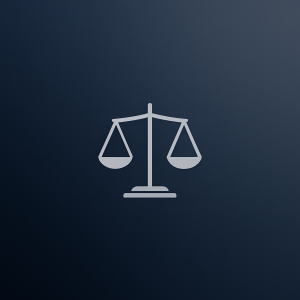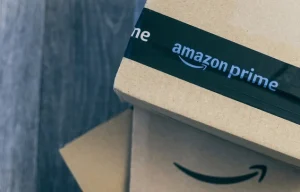Ethan Eisner has general management responsibility for leading the global commercial markets businesses, as well as overseeing global strategy and M&A for the Reed Tech division of LexisNexis. Providing great insights and unmissable advice, Ethan discusses with us how utilising data analytics can allow companies to construct better strategies, how to ensure you are patenting correctly and what businesses ought to do to ensure they have competitive advantage.
What is the most common mistake that companies make in regards to their patenting?
Numerous companies use the same strategy across their portfolios when deciding how to amend claims, regardless of the allowance rate of the examiner. During the patenting prosecution process, the more strategic companies look at the specific examiner they are assigned for every application. If they have an examiner that is extremely likely to offer a quick allowance, then there is no need to make an aggressive claim amendment early in prosecution. In the end, this will lead to a better and more valuable claim set for the allowed patent. On the other hand, companies facing examiners that typically require many office actions before an allowance, make the mistake of repeatedly amending claims in response to rejection after rejection.
Companies should use pilot programs, appeal and other available options strategically based on the characteristics of the examiner with whom they are dealing. All of this is to say that companies that are not data-driven generally do not optimize their approach to patent prosecution. In the end, they end up with less valuable patents and a more expensive prosecution process.
When it comes to patenting, how has increased use of technology impacted the protection of unique inventions?
Data analytics now enables companies and law firms to see trends that were never possible before. Being able to see and understand these trends allows decision makers to have a more optimal approach to patent drafting to better protect their patents. The exact way a patent claim is constructed is central to patent litigation. It is now possible to dissect allowed patent claims and analyse claim elements for both literal and conceptual matching. Patent attorneys can now find elements within their claim that lack or have vague antecedents and quickly find prior art and case law references to the key elements. Starting to protect patents in the drafting stage is obviously much more cost-effective than doing so in patent litigation.
Patentability searches have improved tremendously over the years through the integration of technological enhancements in prior art search tools, including advanced queries and filtering techniques utilising big data processing and related analytics. As a result, patent practitioners and patent examiners alike are able to utilise refined prior art search tools to arrive at sound determinations of patentability more effectively and efficiently.
In combination with the knowledge from prior art search results, there are now sophisticated patent application preparation and prosecution workflow solutions. Such solutions are extremely beneficial from a patent preparation and prosecution perspective in that they provide for automated detection of claim anomalies, improper part recitations, and file history analytics. As a result, patent practitioners are able to facilitate arriving at patentable subject matter more quickly, to streamline the patent preparation and prosecution process, decrease pendency times, save costs, and obtain higher quality, stronger and more defensible patents.
How can utilising data analytics allow more strategic decisions to be made for companies, regarding patents?
I referenced patent analytics for patent prosecution and drafting above but patent analytics can help companies answer a variety of key strategic questions in patent litigation as well. In the realm of litigation, the utilisation of patent analytics enables patent practitioners to conduct better pre-litigation and litigation analyses and achieve better outcomes by uncovering critical insights across patent portfolios containing large aggregates of data, including: identifying strengths and weaknesses subject to exploitation; pinpointing changes that occurred during prosecution; and invalidating asserted patents by uncovering difficult to find, but highly relevant, prior art references having alternative terminology with patent thesauri.
When it comes to patent litigation, there is significant risk and costs ramp up quickly. In this case, data analytics are even more central. Since so much of this litigation occurs in the US, it is vital to view data from US district court, Patent Trial & Appeal Board (PTAB) and International Trade Commission (ITC). Information is available to be able to compare and evaluate court venues, judge tendencies, and the performance of different law firms. This type of information can help shape a company’s litigation strategy. Good counsel armed with data analytics can enable more productive strategies.
What would you recommend the next steps to be for those who notice potential hurdles in their strategy for competitive gains?
More strategic patent prosecution and drafting will allow companies to be more cost-effective and reduce their patent spend. There are still many companies that have not adopted data analytics within their patent departments. Companies moving forward are realising it is a competitive advantage as they can achieve both better outcomes and cost savings. During the patent drafting process, there are data analytic tools that can virtually decimate the number of rejections a company will receive and help ensure a patent being granted which is less likely to be litigated. When companies can obtain patents strategically with limited amendments, fewer errors and at a lower cost, they absolutely have a competitive advantage. There is a tremendous opportunity that awaits those that take the initiative and optimise now.
Patent analytics can also be leveraged to determine the relative strengths, weaknesses and opportunities of competitor patents and published patent applications ripe for exploitation. When conducting due diligence with respect to clearance searches and freedom to operate analyses, patent analytics can be leveraged to quickly obtain post-issuance activity status update reports that include insightful information such legal status, notices of litigation, notices of requests for reexamination, withdrawals, reissues, re-examinations, and disclaimers. Competitor patents can be invalidated by uncovering with patent thesauri difficult to find, but highly relevant, prior art references reciting alternative terminology drafted by clever lexicographers.
How should these solutions be tailored fit for each individual company?
Every company files applications within a limited set of Group Art Units. Each Group Art Unit handles a different technology category. Companies have the opportunity to get to know and statistically understand every examiner in the specific art unit groups that are relevant. Not only can you get to know the specific examiners and their tendencies, you can see how subsections of examiners within the same group collectively exhibit very strong decision making patterns. Once you see how your specific art units are operating, once the light goes on, it becomes difficult not to get better results.
Should larger corporations make further considerations regarding their patents, compared to smaller companies?
It used to be the shotgun verse the rifle approach. Big companies had the luxury of filing many applications in the hope that some of them hit the target, whereas many startups were reliant on one or a few targeted patents applications. Now even large companies are for the first time trying to optimise how many hit the target. Patent departments are now being held accountable for results. In addition, there are more ways now to knock out low quality patents (e.g., pre-issuance submissions, IPRs, PGRs, and the PTAB, which is relatively hostile towards patent proprietors). Furthermore, lower quality patents can be surfaced more readily by Patent Quality algorithms available in the information marketplace. Even in the relatively short-term, larger companies can realize a competitive advantage by being more strategic and leveraging patent analytics in their favour to achieve better outcomes. That being said, startups cannot afford to fail. Data analytics and employing a tailored strategy to their business can likewise give them a better chance at hitting the target. Data analytics can level the playing field for them so they can be more strategic and cost-effective in their patent drafting and patent prosecution.




















